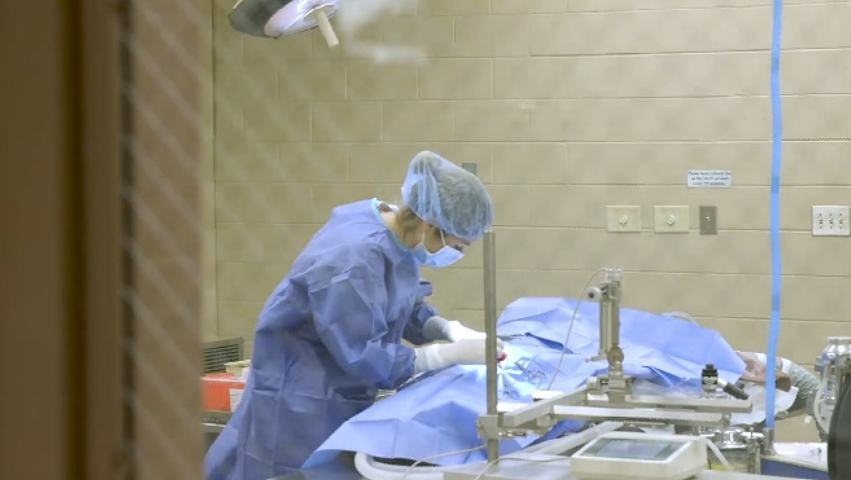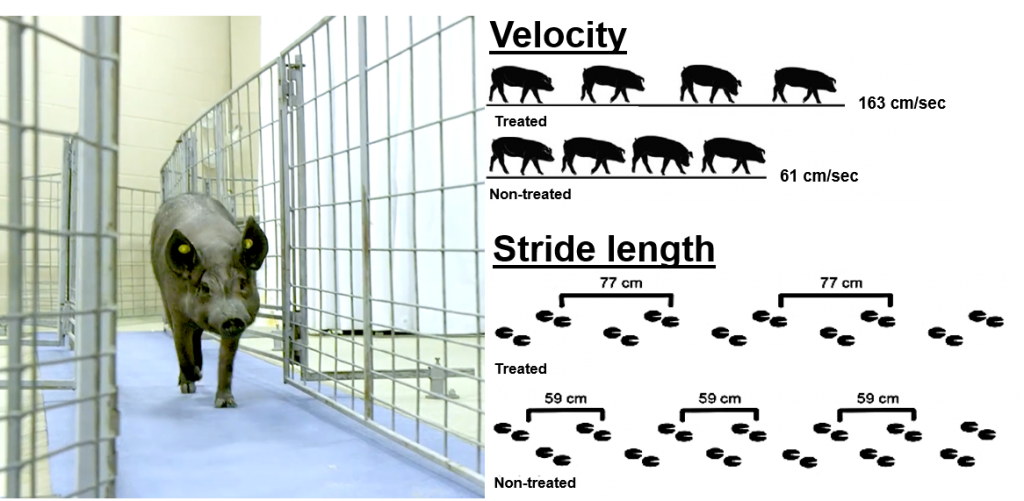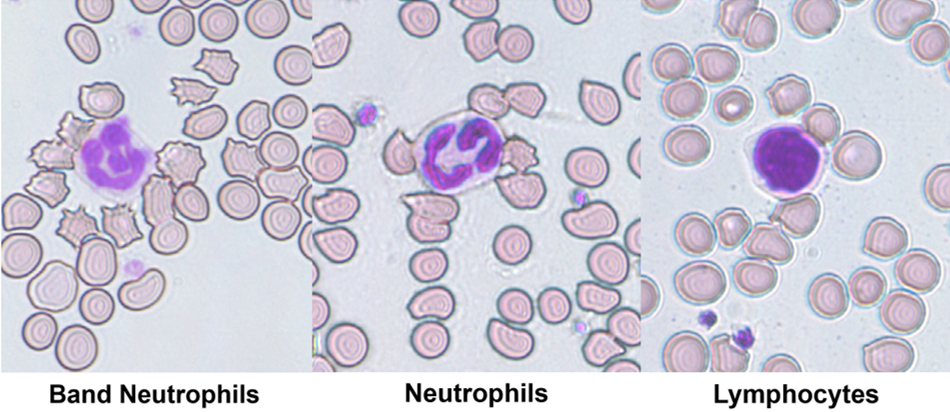The Translational Neural Repair and Regeneration Laboratory consists of three laboratory spaces including the Motor Function Laboratory and the Cognitive Assessment Laboratory located in the Large Animal Research Facility as well as the Cell and Molecular Biology Laboratory. The combined laboratory space is over 3,200 sq. ft. located in the Edgar L. Rhodes Animal and Dairy Science Department at the University of Georgia.
The Large Animal Research Facility is a restricted access, PHS/AAALAC approved, USDA registered facility. This continuously monitored facility is capable of housing up to one hundred and fifty pigs ranging from newborns to sexually mature adults. Pigs can be individually or group housed in large enclosures that are compliant with the Guide for the Care and Use of Laboratory Animals. All pigs are provided with daily environmental enrichment to improve their well-being. The humidity, day and night schedule, ventilation, and room temperature are maintained at optimal settings for pigs. Feeding, water provision, sanitation, and twice daily health evaluations are provided by trained staff and documented in facility’s standard operating procedures. The University of Georgia’s Institutional Animal Care and Use Committee reviews and approves all animal use protocols to ensure animals receive the highest standard of humane care.
This facility also has a fully equipped sterile surgical suite for research purposes. The research surgery facility encompasses approximately 1,500 sq. ft. and is equipped to carry out complex surgical and interventional research in large animal models. Specifically, there is a dedicated 400 sq. ft. operating room, along with extensive dedicated areas for preoperative preparation, anesthetic induction, intra- and post-operative monitoring, and post-operative recovery. Veterinary and research staff are equipped with clinically relevant monitoring equipment with central gas sources and scavenging systems. A specialized laboratory located directly adjacent to the surgery suite provides supplemental resources for cell-based and co-culture research.

The Motor Function Laboratory boasts a quadruped gait analysis system, GAIT4Dog®, that is modeled after the human GAITRite® walkway system. The 23,040 active sensors within the GAIT4Dog® mat combined with a 30fps HD camera enables automated collection and analysis of quantitative gait data using GaitFour® software. The Motor Function Laboratory quantitatively assesses changes in spatiotemporal gait parameters such as velocity (cm/sec), cadence (steps/min), stride length (the distance between successive ground contact of the same hoof), swing percent of cycle (the percent of a full gait cycle in which a limb is not in contact with the ground), cycle time (the amount of time for a full stride cycle), and swing time (the amount of time a limb is not in contact with the ground) as well as kinetic parameters such as mean pressure (the amount of pressure exerted by a limb).

The Cognitive Assessment Laboratory utilizes multiple behavior tests to assess changes in learning, memory, and behavior. The open field test is utilized to quantify normal (e.g. exploration) and abnormal (e.g. anxiety, depression) behaviors. The novel object recognition test is utilized to assess spontaneous trial-unique object memory, which is comparable to episodic memory in humans that involves memory of spontaneous events and not necessarily of learned tasks. The spatial plus T-maze test is used to assess the ability of pigs to form allocentric, hippocampal-dependent spatial memories. The 3 chamber social recognition test is used to measure changes in sociability behaviors and social memory formation. All tests are recorded using a monochrome infrared, high-sensitivity GigE camera (60 frames/sec) on a dedicated Dell Precision T5810 workstation. Ethovision XT software (Noldus), the most widely applied video tracking software, enables automated tracking and analysis to obtain objective and quantifiable measures of behavioral characteristics.

The Cellular and Molecular Biology Laboratory is a state-of-the-art facility specifically designed for research in stem cell and transgenic biotechnology of domestic animals. Our state-of-the-art equipment can support various types of cell culture including induced pluripotent stem cells, embryonic stem cells, neural stem cells, and mesenchymal stem cells. Our laboratory can also provide clients with a wide variety of characterization techniques such as nucleic acid extraction, immunocytochemistry, immunohistochemistry, PCR, RT-PCR, real-time PCR, and ELISAs.

To examine changes due to neural injuries or novel therapies, the TNRR’s cellular and molecular biology laboratory also performs in house peripheral blood smears. Changes in red blood cells, white blood cells, and platelets can be assessed to diagnose conditions such as anemia, jaundice, thrombocytopenia, infection, kidney failure, and even certain cancers. Previously we have quantified systemic levels of neutrophils, band neutrophils, and lymphocytes to assess post-stroke inflammatory responses1. In clinical settings, the neutrophil-to-lymphocyte ratio is a useful marker to predict neurological deterioration and short-term mortality in acute ischemic stroke patients2,3.

- 1Kaiser, E.E., et al., Characterization of tissue and functional deficits in a clinically translational pig model of acute ischemic stroke. Brain Res, 2020. 1736: p. 146778.
- 2Xue, J., et al., Neutrophil-to-Lymphocyte Ratio Is a Prognostic Marker in Acute Ischemic Stroke. J Stroke Cerebrovasc Dis, 2017. 26(3): p. 650-657.
- 3Zhang, J., et al., Prognostic role of neutrophil-lymphocyte ratio in patients with acute ischemic stroke. Medicine (Baltimore), 2017. 96(45): p. e8624.